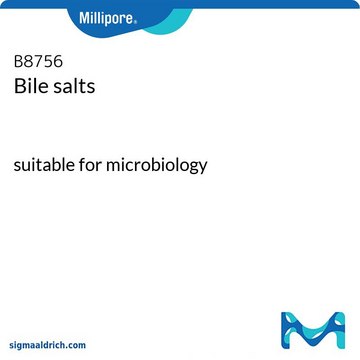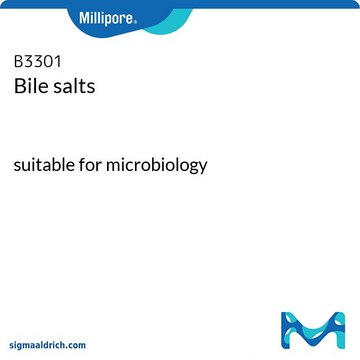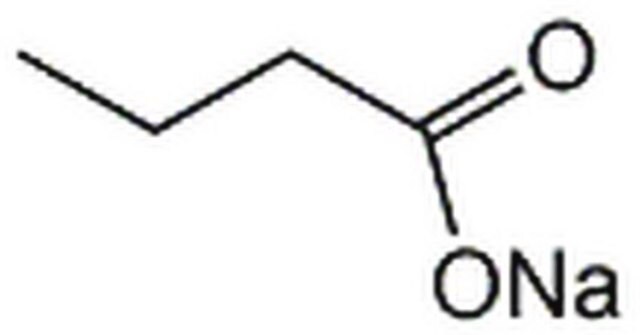B5887
Sodium butyrate
≥98.5% (GC)
Synonym(s):
Butyric acid sodium salt
About This Item
Recommended Products
biological source
synthetic (organic)
Quality Level
Assay
≥98.5% (GC)
form
powder
storage condition
(Tightly closed. Dry.
Keep in a dry place. )
technique(s)
DNA amplification: suitable
cell based assay: suitable
inhibition assay: suitable
color
white
mp
250-253 °C (lit.)
solubility
water: 100 mg/mL, clear to slightly hazy, colorless
cation traces
Na: 19.8-22.0% (anhydrous)
suitability
suitable for DNA precipitation
application(s)
cell analysis
life science and biopharma
lipidomics
storage temp.
room temp
SMILES string
[Na+].CCCC([O-])=O
InChI
1S/C4H8O2.Na/c1-2-3-4(5)6;/h2-3H2,1H3,(H,5,6);/q;+1/p-1
InChI key
MFBOGIVSZKQAPD-UHFFFAOYSA-M
Gene Information
mouse ... ENSMUSG00000061062(15181)
Looking for similar products? Visit Product Comparison Guide
Application
- as a component in homogenization and immunoprecipitation buffer for HDAC inhibition in fly embryos and insect s2 cells.
- as histone deacetylase inhibitor in breast cancer cell line MDA-MB-231, analysed by cell viability assay and viral replication assay.
- to enhance the production of recombinant tissue-plasminogen activator (t-PA) in Chinese hamster ovary (CHO) cells in a bioreactor.
Biochem/physiol Actions
Caution
Other Notes
related product
Signal Word
Warning
Hazard Statements
Precautionary Statements
Hazard Classifications
Acute Tox. 4 Oral - Eye Irrit. 2 - Skin Irrit. 2
Storage Class Code
11 - Combustible Solids
WGK
WGK 1
Flash Point(F)
Not applicable
Flash Point(C)
Not applicable
Personal Protective Equipment
Choose from one of the most recent versions:
Already Own This Product?
Find documentation for the products that you have recently purchased in the Document Library.
Customers Also Viewed
Articles
Naive pluripotent stem cells are located within the epiblast of mature blastocysts. These primitive “ground-state” cells may be cultured in vitro using specialized media and small molecule inhibitors.
Epigenetic modifications are thought to occur through two key interconnected processes—DNA methylation and the covalent modification of histones.
Our team of scientists has experience in all areas of research including Life Science, Material Science, Chemical Synthesis, Chromatography, Analytical and many others.
Contact Technical Service










